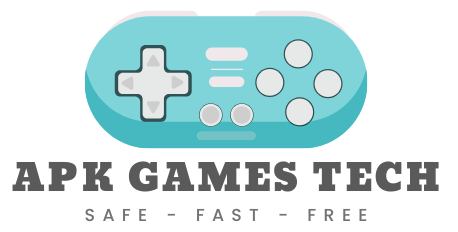Download Burger Please! MOD Premium
*Burger Please!* is a hybrid casual, arcade idle simulation game developed by Molip and published by Supercent. The game’s core concept centers on managing and expanding a fast-food restaurant. Players begin by manually performing tasks like serving customers and cleaning tables. Through progression, they hire and upgrade employees to automate operations, which gradually shifts the player’s role from a direct worker to a manager focused on optimizing and growing their business empire.
Gameplay Screenshots
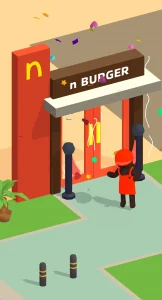
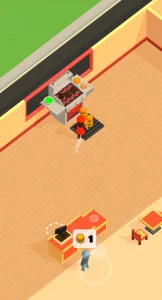
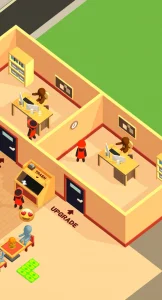
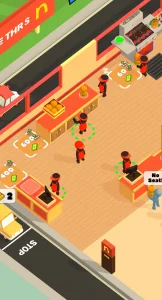
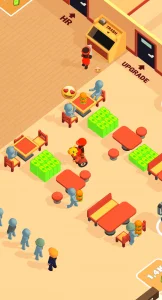
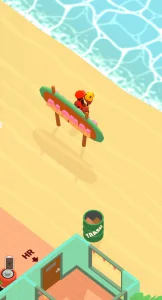
What is Burger Please!?
An In-Depth Analysis of Burger Please!: The Hybrid Casual Phenomenon
Burger Please!, a title developed by Molip and published by the South Korean powerhouse Supercent, represents a significant entry in the mobile gaming landscape. Released in early 2023 for Android and iOS platforms, this game rapidly ascended the charts, becoming the most downloaded new mobile game of the year. Its design philosophy embodies the "hybrid casual" genre, merging a simple, addictive arcade-idle core loop with deep, data-driven monetization and progression systems. This analysis deconstructs the game's mechanics, economic model, and market impact, providing a comprehensive overview for players evaluating the simulation experience offered by the Burger Please! APK.The Publisher: Supercent's Data-Driven Ascendancy
The publisher behind Burger Please! is Supercent, Inc., a company that has quickly established itself as a major force in the global mobile market since its inception in March 2021. Supercent's operational model is predicated on a highly analytical, data-centric approach. The company utilizes a proprietary "AI-Driven System" that informs every aspect of its business, from initial game prototyping and market forecasting to user acquisition (UA) and monetization strategies. This system enables Supercent to test concepts rapidly and scale successful titles with high precision, a strategy validated by the immense success of games like Burger Please! and Pizza Ready!. Understanding this calculated approach is key to comprehending the game's design, where nearly every feature is a product of a strategy aimed at maximizing user engagement and revenue.Deconstructing the Gameplay Mechanics
Burger Please! is fundamentally a simulation game rooted in the arcade idle genre. The gameplay experience is defined by a compelling progression from active, manual labor to passive, strategic management, creating a rewarding and highly retentive core loop.The Core Loop: From Arcade Action to Idle Management
The player's initial interaction with the game is direct and manual, fulfilling the "arcade" component of its genre. Using a simple virtual joystick, the player controls an avatar to perform foundational tasks: picking up burgers from machines, delivering them to the counter, collecting cash from customers, and cleaning tables. This active phase introduces the "idle" element as the player earns enough in-game currency to hire staff. Employees begin to automate these core tasks, shifting the player's role from a hands-on worker to a manager. This transition from active participation to strategic oversight is the central reward cycle that drives long-term engagement.Progression and Expansion: Building a Fast-Food Empire
The long-term objective is the perpetual growth of the player's restaurant franchise. Players invest earned cash to physically expand their establishment, unlocking new service counters, adding tables to increase customer capacity, and installing more efficient burger machines. The expansion continues with the addition of major new facilities, such as a drive-thru, which introduces a parallel revenue stream. This progression extends beyond a single location; the game features a world map, with the ultimate goal being the establishment of a global restaurant chain. Player progress is formally tracked via an experience point (XP) system, where actions like building furniture grant stars that contribute to leveling up and earning rewards.Management Systems: Staff and Player Upgrades
The game's optimization is managed through two distinct upgrade hubs. The "HR Office" allows players to hire new employees and, more critically, to upgrade the entire workforce's attributes, such as movement speed and carrying capacity. The second hub is dedicated to upgrading the player's own avatar with the same enhancements. This design presents a strategic choice: early on, upgrading the player character yields the most immediate benefit, while later, investing in staff becomes more efficient as the restaurant automates. This dual-path system adds a layer of management strategy to the gameplay.The In-Game Economy: Currencies and Progression Gates
The economy of Burger Please! utilizes two primary currencies. Cash, the soft currency, is earned from customer sales and fuels nearly all progression, from hiring staff to unlocking new areas. Gems, the hard currency, are acquired in small amounts through gameplay or primarily through in-app purchases. Gems function as a utility currency, allowing players to bypass time constraints, purchase powerful boosts, and skip ad-watching requirements. A critical economic feature is the deliberate currency devaluation between major locations. When a player moves to a new state or country, their accumulated cash from the previous stage becomes obsolete, and a new currency is introduced. This mechanic resets the difficulty curve, extends the game's longevity, and creates strong incentives to engage with the monetization system to accelerate through the challenging early phases of a new restaurant.Game Modes and Live Operations
To maintain player interest and combat repetitiveness, Burger Please! supplements its core mode with limited-time events, a strategy known in the industry as "Live Ops."Primary Restaurant Management Mode
The main game mode is the continuous campaign of building and expanding the fast-food franchise. This core experience guides the player from a single counter to a multi-national empire, with each new major location on the world map functioning as a new chapter. These chapters often introduce new menu items, aesthetic themes, and the aforementioned currency reset to provide a fresh challenge.Limited-Time Themed Events
Live Ops events transport the player to a unique, temporary setting with altered gameplay. An example is the "Hawaii Stage," a six-day event where the standard burger shop was replaced with a beach bar serving hot dogs and drinks. These events feature their own progression tasks and reward players with gems, incentivizing participation. Strategically, these events serve as low-risk testbeds for Supercent, allowing the publisher to gather data on player engagement with new mechanics, which can inform the development of future standalone titles.Strategic Gameplay and Optimization
Efficient progression in Burger Please! requires a strategic approach to upgrades, resource management, and interaction with the game's integrated advertising system.Optimal Upgrade Paths and Resource Management
A player's journey toward building a burger empire is accelerated by making smart investment choices. The most effective strategies involve a phased approach to spending in-game currency.- Early-Game Focus: Prioritize upgrading the player avatar's speed and carrying capacity. As the primary worker, enhancing the player character provides the fastest initial capital generation.
- Mid-Game Transition: Shift investment toward staff upgrades and passive income enhancements. Improving employee efficiency and increasing the maximum cash storage capacity are crucial to prevent revenue bottlenecks.
- Currency Management: Aggressively reinvest cash into upgrades that increase earning rates. Since cash is devalued upon moving to a new location, hoarding it is inefficient. Gems, the premium currency, should be saved for high-value permanent upgrades or for skipping ad requirements during time-sensitive events.
Leveraging the Monetization System
The advertising system is so deeply integrated that it functions as a core gameplay mechanic. The most effective players treat rewarded ads as a resource. Watching a 30-second ad for a 10-minute revenue boost offers a significantly higher return on investment than watching one for a small, one-time cash reward. For players frustrated by unprompted interstitial ads, playing in "Airplane Mode" can disable them. However, this comes at the cost of being unable to watch rewarded ads, resulting in a much slower, albeit smoother, progression path.Monetization Model and Technical Profile
Burger Please! employs a sophisticated hybrid monetization model that synergizes in-app purchases (IAP) with a pervasive advertising system, all running on a technical framework designed for broad platform accessibility.Hybrid Monetization: IAPs and Aggressive Advertising
The game generates revenue through both direct player spending and ad views. The in-game shop offers high-value bundles, such as a package that includes the permanent removal of ads, exclusive cosmetic skins, and powerful gameplay boosts. The advertising implementation is notably aggressive. Full-screen interstitial ads interrupt gameplay frequently, reportedly every 60 to 90 seconds. This creates a significant pain point that directly incentivizes the purchase of the "No Ads" pack. Simultaneously, optional rewarded video ads are woven into the progression system, offering powerful boosts and free staff, encouraging voluntary ad engagement.Technical Specifications and Platform Support
Burger Please! is available on a wide range of platforms, including Android (6.0 and up), iOS (13.0 and up), macOS (M1 chip required), and Windows PC via Google Play Games. The official Android package ID is io.supercent.burgeridle. A notable technical detail is the file size disparity: the Android APK ranges from 122 MB to 208 MB, while the iOS version is substantially larger at over 533 MB. This suggests the iOS build may contain higher-resolution assets or a greater number of integrated third-party SDKs for analytics and advertising, a key consideration for users with limited device storage.Final Assessment: A Polished but Compromised Experience
Burger Please! is a masterclass in hybrid casual game design and publishing. The developer, Molip, has crafted an exceptionally addictive and accessible core gameplay loop, while the publisher, Supercent, has leveraged a powerful, data-driven strategy to achieve phenomenal market penetration, even surpassing major tech applications like ChatGPT in new downloads for 2023. The game's strengths lie in its simple controls, satisfying progression, and polished presentation. However, the player experience is fundamentally defined by its aggressive monetization. The constant interruption from interstitial ads is the most significant point of criticism and serves as a deliberate mechanism to drive in-app purchases. For players considering the Burger Please! APK, the decision rests on a trade-off. The title offers a highly engaging and well-made tycoon simulation that is perfect for casual play. Yet, this experience is inextricably linked to an advertising model that prioritizes revenue generation at the expense of seamless gameplay. The game is either a fun but constantly interrupted free experience or a much smoother and more enjoyable premium title after the purchase of ad removal.Understanding the Core Gameplay of Burger Please!
Burger Please! operates within the arcade idle genre. The game combines active player control with passive automation systems. Players directly control a character avatar using an intuitive virtual joystick. This control scheme facilitates all primary interactions within the game world.
The initial gameplay loop involves manual, repetitive tasks. The player character picks up burgers from automated machines. The character then stacks these burgers for delivery. Players deliver orders to the service counter and collect cash from customers. Additionally, the player must clean tables and restrooms to accommodate new patrons. This manual activity constitutes the “arcade” component of the game’s design.
The “idle” mechanics emerge as players accumulate in-game currency. Players use this currency to hire employees like chefs and servers. These staff members gradually automate the core functions of the restaurant. Automation shifts the player’s role from a hands-on worker to a strategic manager. The player’s focus transitions from individual order fulfillment to the optimization of the restaurant’s overall workflow.
Progression and Restaurant Expansion
Building a Fast-Food Empire
The long-term objective in Burger Please! is the continuous growth of the player’s business. Players spend earned cash to expand their restaurant’s physical footprint and operational capabilities. This expansion includes unlocking new service counters and adding more tables to increase customer capacity. Players can also install new burger machines and food pickup terminals to enhance output and open new revenue streams. A major expansion milestone involves unlocking a drive-thru, which introduces a parallel operational challenge.
Progression extends beyond a single location. The game features a world map that visualizes the player’s journey. The ultimate goal is to establish a global chain of restaurants. An experience point (XP) system, represented by stars, formally tracks progress. Players earn stars by performing actions like building furniture or upgrading equipment. Accumulating sufficient stars increases the player’s level and often yields cash or gem rewards.
Managing Currencies and Resources
The game’s economy is centered on two main currencies. Cash, the soft currency, is earned from customer orders. It fuels nearly all progression, funding staff hires, attribute upgrades, and restaurant expansion. Gems represent the hard currency. Players receive gems in small amounts from leveling up but acquire them primarily through in-app purchases. Gems function as a utility currency, allowing players to bypass time constraints, claim rewards without watching ads, and purchase powerful boosts.
A critical economic feature is the deliberate devaluation of currency between major stages. When a player completes a restaurant and moves to a new location, the game introduces a new, distinct currency. All accumulated cash from the previous stage becomes unusable for progression in the new area. This design choice resets the game’s difficulty curve, extends longevity, and creates incentives for players to accelerate the challenging early phases of each new restaurant.
Gameplay Systems and Player Strategy
Optimizing Staff and Player Upgrades
The game presents two primary hubs for character enhancement. The HR Office allows players to manage their workforce. Players use cash to hire new employees and upgrade the attributes of all staff members. These upgrades primarily improve movement speed and carrying capacity. The second hub is dedicated to upgrading the player’s own avatar with similar enhancements to speed and capacity. This system creates a key strategic choice. Early in a new restaurant’s development, upgrading the player avatar yields the most significant immediate returns. As the restaurant becomes more automated, shifting investment toward staff upgrades becomes the more efficient path to growth.
Game Modes and Special Events
The primary game mode is a continuous campaign of restaurant expansion across a world map. This mode forms the core experience of the game. To enhance engagement, Burger Please! also incorporates limited-time special events, known as Live Ops. These events transport the player to a unique location with a temporary business to manage, such as a Hawaiian beach bar. Gameplay mechanics shift to fit the new theme, requiring players to serve different items like hot dogs and drinks. Completing event-specific tasks rewards players with premium currency, providing a strong incentive to participate.
A Guide for New Restaurant Managers
Burger Please! provides a guided tutorial for all new players. Prominent on-screen arrows direct the player through the initial sequence of actions, ensuring a clear understanding of the basic mechanics. The control system uses a single virtual joystick for movement. Interactions are automated; the player character performs an action, such as collecting cash or initiating a purchase, by simply moving into a designated glowing zone.
Key Objectives for Early-Game Success
A new player should follow a specific sequence of actions to establish an efficient operation. This structured approach ensures rapid initial growth.
- Activate the Counter: The player first moves their character to the burger machine to pick up the initial product.
- Serve the First Customer: The player carries the burger to the service counter, where a customer will automatically complete the transaction and leave cash.
- Collect Initial Earnings: The player walks over the cash on the counter to add it to their balance.
- Expand Customer Capacity: The player uses the earned cash to unlock the first set of tables, which allows more customers to patronize the restaurant.
- Master the Cleaning Cycle: After customers finish eating, the player must collect the cash from the table and then clean the table to make it available for the next patron.
- Begin Automation: The player uses accumulated funds to unlock the HR Office and hire the first employee, which begins the transition from manual labor to passive management.
Advanced Tips for Optimization
Strategic Investment and Upgrade Paths
Efficient progression requires careful prioritization of cash investments. In the early phase of any restaurant, the player’s character is the primary bottleneck. Upgrading the player’s speed and carrying capacity should be the first priority to accelerate initial capital generation. As the restaurant grows and staff is hired, the focus should shift to upgrading staff attributes and restaurant throughput, such as burger machine output and cash storage capacity. Cash should be spent aggressively on upgrades, as hoarding it is inefficient due to the currency reset mechanic between locations.
Leveraging the In-Game Ad System
The advertising system is a core gameplay mechanic that directly influences progression speed. A strategic player treats rewarded advertisements as a resource. Watching an ad for a temporary but powerful boost, such as a 10-minute revenue multiplier, provides a much greater return on investment than watching an ad for a small, one-time cash reward. Players who strategically use these boosts during active play sessions will progress significantly faster. For players who wish to avoid unprompted interruptions, activating “Airplane Mode” on their device will disable interstitial ads. This tactic, however, also disables access to the powerful boosts offered by the optional rewarded ad system, resulting in a much slower rate of progression.
